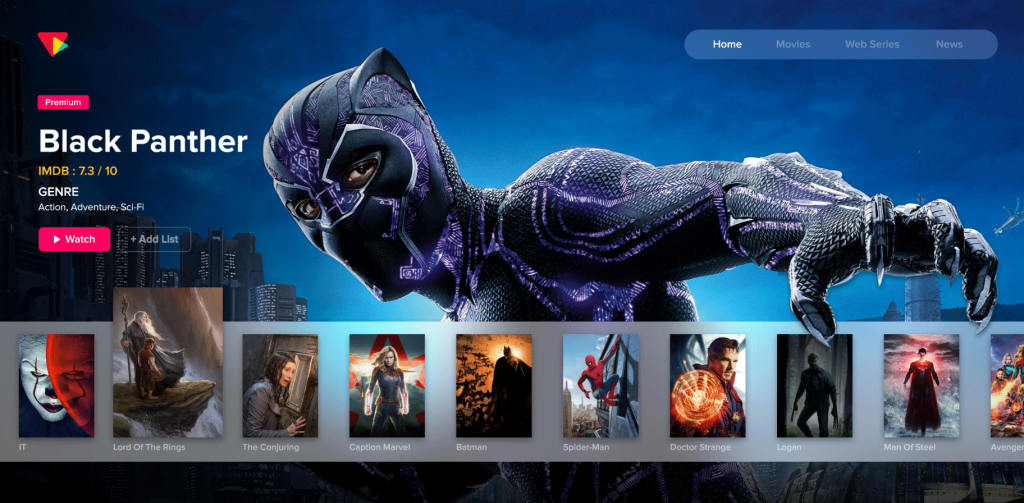Apollo Group Tv Fundamentals Explained
Apollo Group Tv Fundamentals Explained
Blog Article
Get This Report about Apollo Group Tv
Table of ContentsThe 10-Minute Rule for Apollo Group TvThe Best Guide To Apollo Group TvThe Of Apollo Group TvApollo Group Tv for Beginners
In this circumstance, as opposed to having three-minute business places during a 30-minute television program, television shows may alter to one where a customer will certainly be required to have a monthly subscription, to ensure that they cen sight targeted banner advertisements. This kind of advertising and marketing already takes place on the internet, and the amount of information tv firms gather permits them to do similar.Define the major trends among the broadcasting and cable networks. Popular radio shows such as authorities drama Dragnet and western cowboy series Gunsmoke were adapted for television, and brand-new TV shows were funded by solitary advertisers, just as radio shows had been.
Today, the television sector is much a lot more complex. Programs are sponsored by numerous marketers; programming is controlled by significant media corporations; and the three significant networks no much longer dominate the airwaves yet rather share their visitors with countless cord channels. A number of variables make up these fads within the market, including technical growths, government regulations, and the production of new networks.

Some Known Questions About Apollo Group Tv.
Established in 1969, (PBS) created out of a report by the Carnegie Payment on Educational Television, which checked out the function of academic, noncommercial television on society. Public tv was also meant to provide global accessibility to television for customers in country areas or visitors who might not manage to pay for personal tv solutions.
The period in between 1950 and 1970 is traditionally acknowledged as the. In addition to a small portion of airtime managed by public tv, the three major networks (referred to as the Big 3) controlled the television industry, jointly representing greater than 95 percent of prime-time watching. In 1986, Rupert Murdoch, the head of multinational business Information Corp, released the Fox network, challenging the supremacy of the Big 3.
Targeting young and minority target markets with shows such as Buffy the Vampire Slayer, Moesha, Dawson's Creek, and The Wayans Bros., the brand-new networks wished to attract stations away from their old network associations. Rather than repeating the success of Fox, UPN and WB had a hard time to make an effect. Not able to bring in many associate terminals, the two fledgling networks got to fewer households than their larger competitors due to the fact that they were unobtainable in some smaller sized cities.
This choice led the method for the development of cable television flick networks, adding to the rapid development of wire in the 1980s and 1990s. apollo tv group. Further deregulation of cable in the 1984 Cable Television Communications Plan Act eliminated restrictions on cable television prices, allowing operators to charge what they desired for wire solutions as long as there worked competitors to the solution (a criterion that over 90 percent of all cable markets might meet)
Getting The Apollo Group Tv To Work

Having created the very first "superstation," Turner expanded his realm by starting 24-hour news network CNN in 1980. At the end of the year, 28 national programming services were available, and the cable television change had begun. Over the next years, the sector undertook a duration of rapid growth and popularity, and by 1994 visitors could choose from 94 fundamental and 20 costs wire solutions.
Figure 9 - https://calendly.com/vickboyd3319-proton/30min.16 Raised competition from wire networks has actually triggered a constant decline in the networks' target market ratings. During the 1950s, the price of producing a solitary tv show boosted as shows ended up being much longer and production expenses rose. Sponsorship on network tv shifted from solitary sponsorship, in which a program was totally supported and created by one marketer, to multiple sponsorship, in which advertisers got 1- or 2-minute places on the show
Select one of the Big Four networks and print out its once a week shows schedule. Watch the network's prime-time programs over the course of a week, noting the target market for each show.
Examine This Report on Apollo Group Tv

Direct television, frequently referred to as typical broadcast TV, includes wire and satellite television. It's called "linear" since web content follows a predetermined shows routine, unlike on-demand material which the specific visitor chooses to view based upon their very own choices and timetable. So, when you ask, "What is linear TV?", think about it as the traditional method of seeing television that has actually been around for years.
Report this page